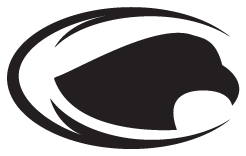
If you know you need to make some changes in order to increase retirement savings in 2025, then keep reading.
We’ve compiled 9 potential changes you can make to your saving, spending, and investing habits that may increase retirement savings in 2025.
Read on to learn more.
The State of Retirement Savings

According to the Northwestern Mutual 2024 Planning & Progress Study, “The ‘Silver Tsunami’ is here: 11,000 Americans will turn 65 every day through 2027; only half of Boomers+ and Gen X believe they’ll be financially ready for retirement.”¹
Unfortunately, many who are part of the “Silver Tsunami” are not ready for retirement.
A separate 2024 survey by Prudential found there will be an increase in “Silver Squatters” or older Americans who will need “to rely more on family for housing, financial support.”²
This is because they have not saved enough for retirement.
According to Prudential, “Nearly a quarter (24%) of 55-year-olds expect to need financial support from family in retirement – twice as many as 65- and 75-year-olds (12%). One in five (21%) also expects to need housing support, compared to 12% of 65-year-olds and 9% of 75-year-olds.”³
So, it’s no surprise that many Americans seek ways to increase retirement savings.
Reconsider Target Date Funds

Vanguard’s How America Saves 2024 Report found that “Eighty-three percent of all participants used target-date funds, and 70% of target-date investors had their entire account invested in a single target-date fund.”⁴
This is likely because employers automatically enroll employees in target date funds by default.
Target date funds are based on an investor’s expected retirement date, but other important factors, such as location, profession, salary, risk tolerance, goals, and objectives, are not always considered.
While target date funds offer a simple, hands-off approach to investing and are often selected as a default option for their convenience, they may not align with everyone’s individual needs.
Those hoping to increase retirement savings in 2025 might benefit from evaluating whether the default option is the best fit for their situation.
Rebalance Your Account

Rebalancing your 401(k) can be beneficial because your risk tolerance may change over time.
The stock or mutual fund you originally selected may no longer align with your financial goals or market conditions.
Rebalancing involves periodically buying or selling assets in your portfolio to maintain your desired level of asset allocation.
However, the appropriate frequency for rebalancing varies depending on individual circumstances, such as your financial strategy, goals, and market conditions.
Those who do not rebalance their allocations periodically may miss opportunities to better align their portfolio with their objectives.
Consider adding rebalancing to your financial planning routine for 2025, and consult a financial advisor to determine the right approach for your situation.
Check out this video to learn more about rebalancing.
Reassess Your Risk Tolerance

Having accessible funds can provide safety and security during market dips or unforeseen financial challenges.
While cash savings are an important component of a financial plan, keep in mind that most money market accounts pay little to no interest, which may limit potential growth opportunities.
Your risk tolerance is unique and may change over time due to life events, financial goals, or market conditions.
Reassessing your risk tolerance periodically can help ensure your financial strategy aligns with your current situation.
Consider consulting a financial advisor when reassessing your risk tolerance to ensure your investment decisions reflect your long-term goals and personal circumstances.
Contribute the Maximum if Possible

Try to contribute as much as possible to your 401(k) – this means contributing up to the limit.
The 401(k) contribution limit has increased to $23,500 in 2025, up from $23,000 in 2024.
For workers 50 and above, the catch-up contribution limit remains at $7,500, allowing for a total contribution limit of $31,000.
Individuals aged 60 to 63 may contribute an additional $11,250 instead of the $7,500 catch-up contribution for other age groups, bringing their total contribution limit to $34,750.
While contributing the maximum may not be feasible for everyone, aim to contribute enough to take full advantage of your employer’s matching contributions – if offered.
Earn Free Money via the Company Match

No one willingly turns down free money. But that’s what happens when you don’t contribute enough to get the company match.
For example, if your company matches 100% up to 6% of your pay, and you make $40,000 a year, you could put in $2,400 (or 6%) for the year, and your company would match this 100%.
This means you have earned $2,400 free money toward your retirement!
[Related Read: 4 Ways to Potentially Maximize Your 401(k) Company Match]
Save Extra Money

We live in a time when it is common to “treat yourself.”
Now, this is different from “paying yourself first.”
Paying yourself first refers to taking care of yourself by saving for your retirement before paying for other things.
Treating yourself refers to treating yourself today, in the present.
Stop spending so much in the present and start saving more for your future.
When you get a bonus, don’t spend it. Save it.
When you get a raise, don’t increase your lifestyle. Save the extra for a more comfortable retirement lifestyle.
Your future self will thank you.
Boost Your Income

If you are behind and want to increase retirement savings, look for opportunities to boost your income.
Consider taking on a second job or side hustle. Look for investment opportunities, such as rental units.
Get Engaged with Your Investments

Even though investments help grow money for the future, many people aren’t engaged with their investments.
Here are some ways that may help you get engaged – and stay engaged – with your investments:
- Learn how to read your 401(k) statement. To know where you stand financially, you need to read your 401(k) statement. See a breakdown of statement images, graphs, and explanations in How to Read a 401(k) Statement and Understand It to gain a better understanding.
- Read blogs. Continue reading this blog and subscribe to YouTube videos or podcasts that strengthen your understanding.
- Ask questions. If there is something you don’t know or don’t understand about your 401(k) investments, ask! Check out this article: 5 Questions to Ask a 401(k) Plan Provider Sooner Rather Than Later.
Ask for Help

The best chance to increase retirement savings is by asking for help.
There is no shame in admitting you don’t have all the answers and don’t know how to save enough to retire comfortably.
401(k) Maneuver exists to help employees grow and protect their 401(k) accounts. We provide independent, personalized professional account management to help employees, just like you, grow and protect their 401(k) accounts.
And we do this without in-person meetings, so you don’t have to drive to an appointment or spend hours preparing for the meeting.
Our done-for-you virtual service allows you to keep your 401(k) right where it is while we review and rebalance your account based on your risk tolerance and current market conditions.
All you need to do is connect your account to our secure platform, and we manage your account for you. There’s no need to move your account – you can keep it right where it is.
Have questions or concerns about your 401(k) performance? Book a complimentary 15-minute 401(k) Strategy Session with one of our advisors.
Sources
- https://news.northwesternmutual.com/2024-04-02-Americans-Believe-They-Will-Need-1-46-Million-to-Retire-Comfortably-According-to-Northwestern-Mutual-2024-Planning-Progress-Study
- https://news.prudential.com/latest-news/prudential-news/prudential-news-details/2024/2024-Pulse-of-the-American-Retiree-Survey/default.aspx
- https://news.prudential.com/latest-news/prudential-news/prudential-news-details/2024/2024-Pulse-of-the-American-Retiree-Survey/default.aspx
- https://institutional.vanguard.com/content/dam/inst/iig-transformation/insights/pdf/2024/has/how_america_saves_report_2024.pdf
.fb-background-color {
background: !important;
}
.fb_iframe_widget_fluid_desktop iframe {
width: 1100px !important;
}















